Tracking SARS-CoV-2 using real-time phylogenetics with Nextstrain
Richard Neher
Biozentrum, University of Basel
slides at neherlab.org/202004_TAGC.html
I won't talk specifically about work by myself or by my group
Instead:
Overview of a collective effort from the Nextstrain perspective
Acknowledgements
Trevor Bedford and his lab -- terrific collaboration since 2014

James Hadfield, Emma Hodcroft and Tom Sibley have led the recent development
Data we analyze are contributed by scientists from all over the world
Data are shared and curated by GISAID


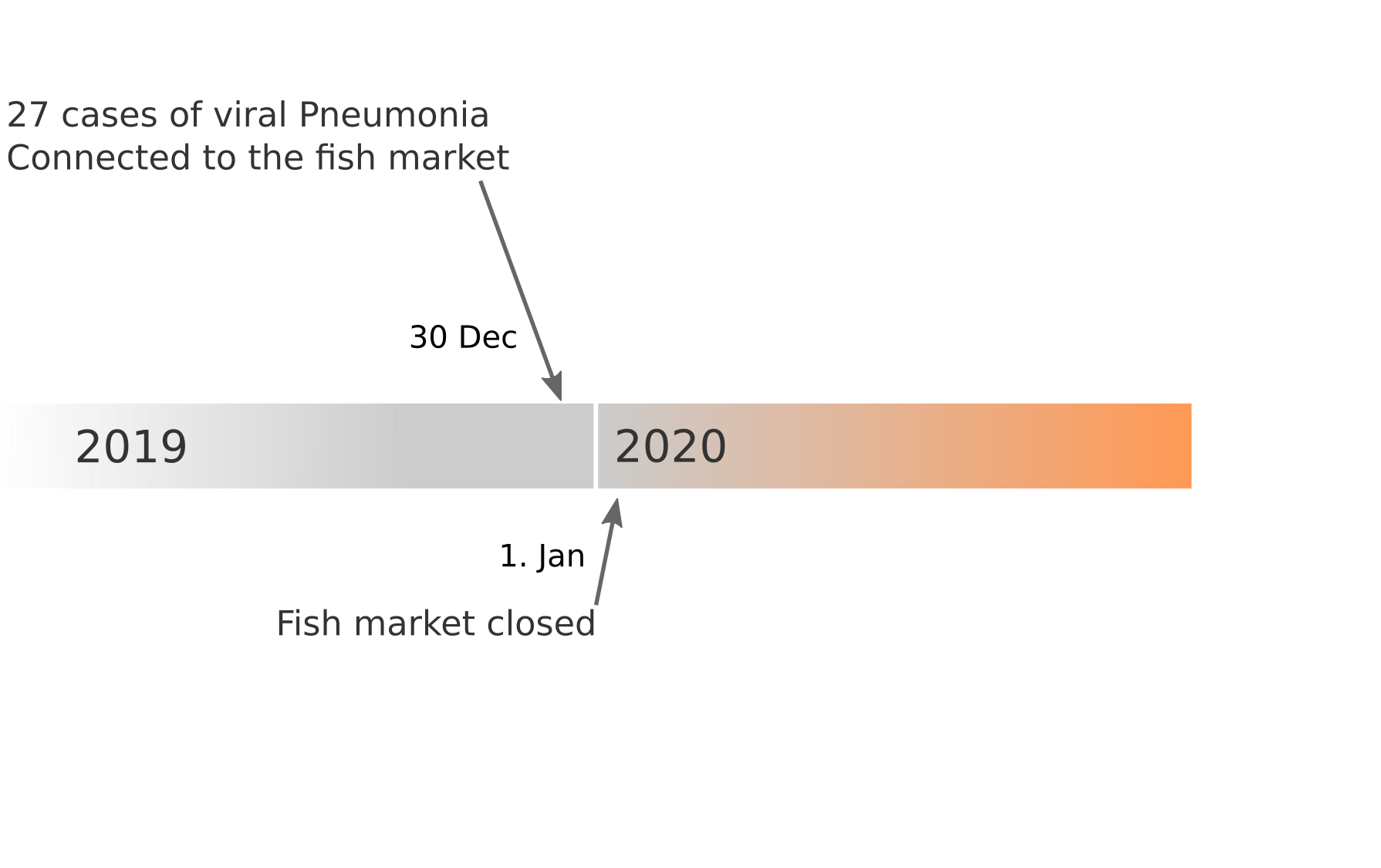 Data summarized by Ian MacKay
Data summarized by Ian MacKay
 Data summarized by Ian MacKay
Data summarized by Ian MacKay
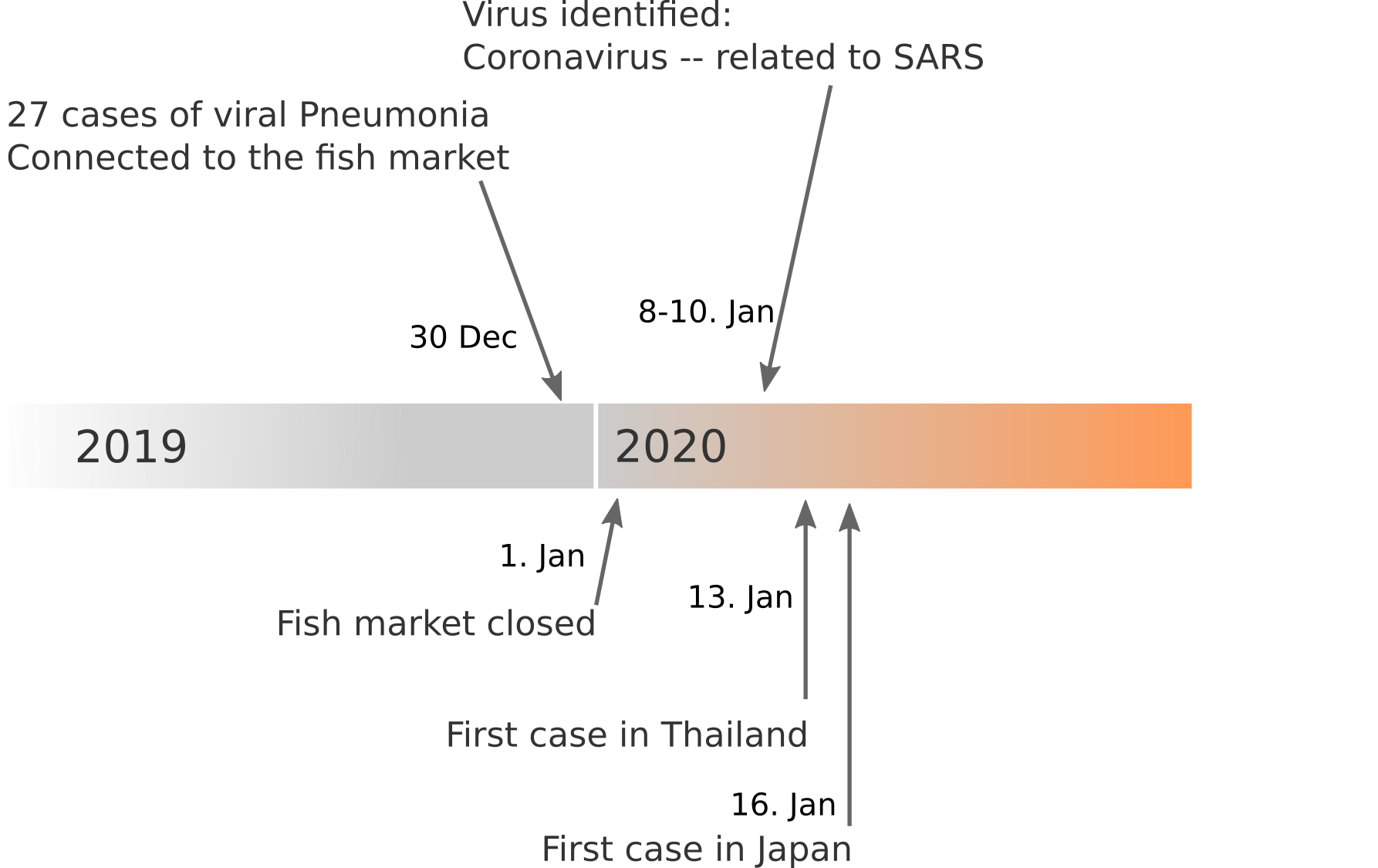 Data summarized by Ian MacKay
Data summarized by Ian MacKay
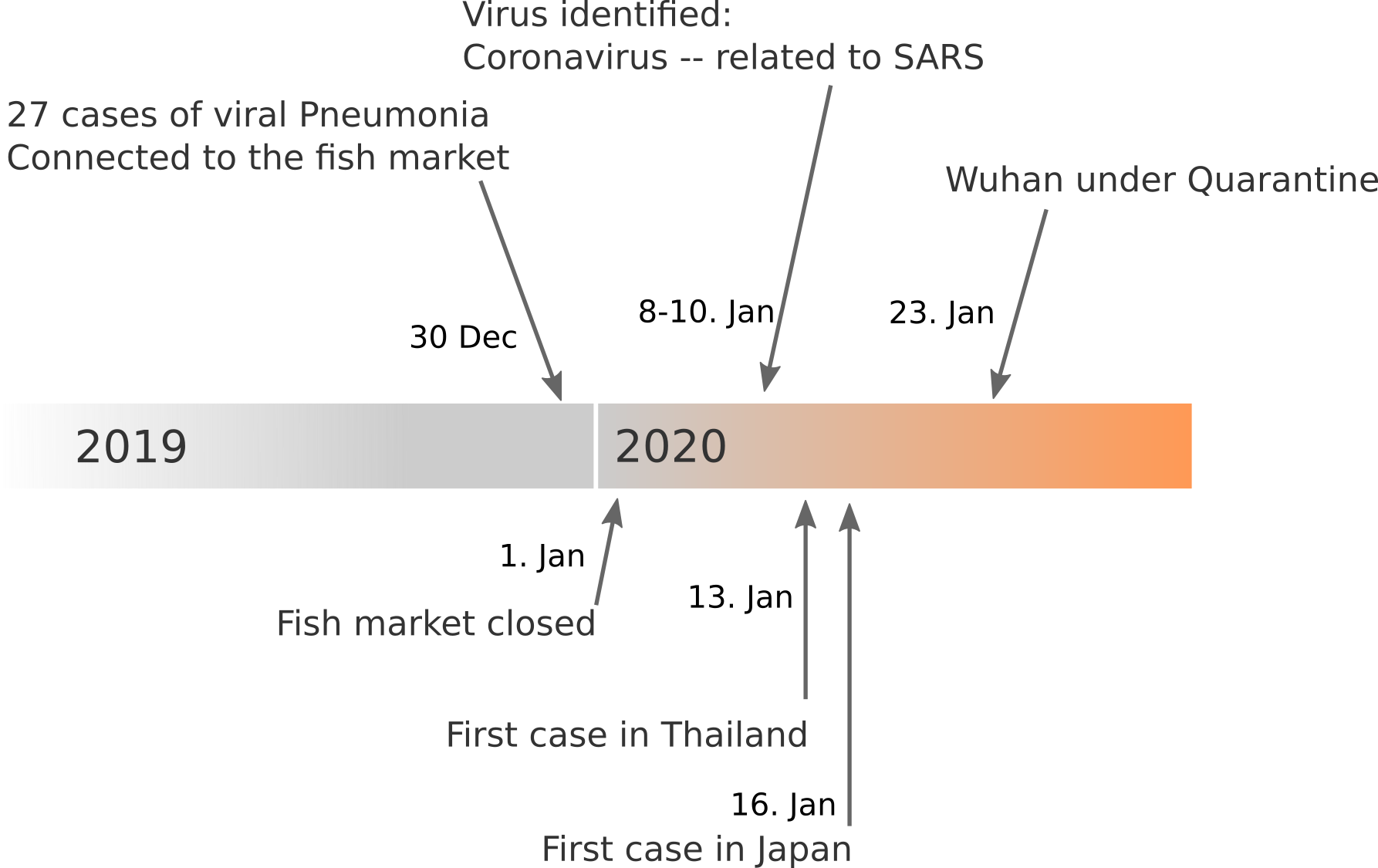 Data summarized by Ian MacKay
Data summarized by Ian MacKay
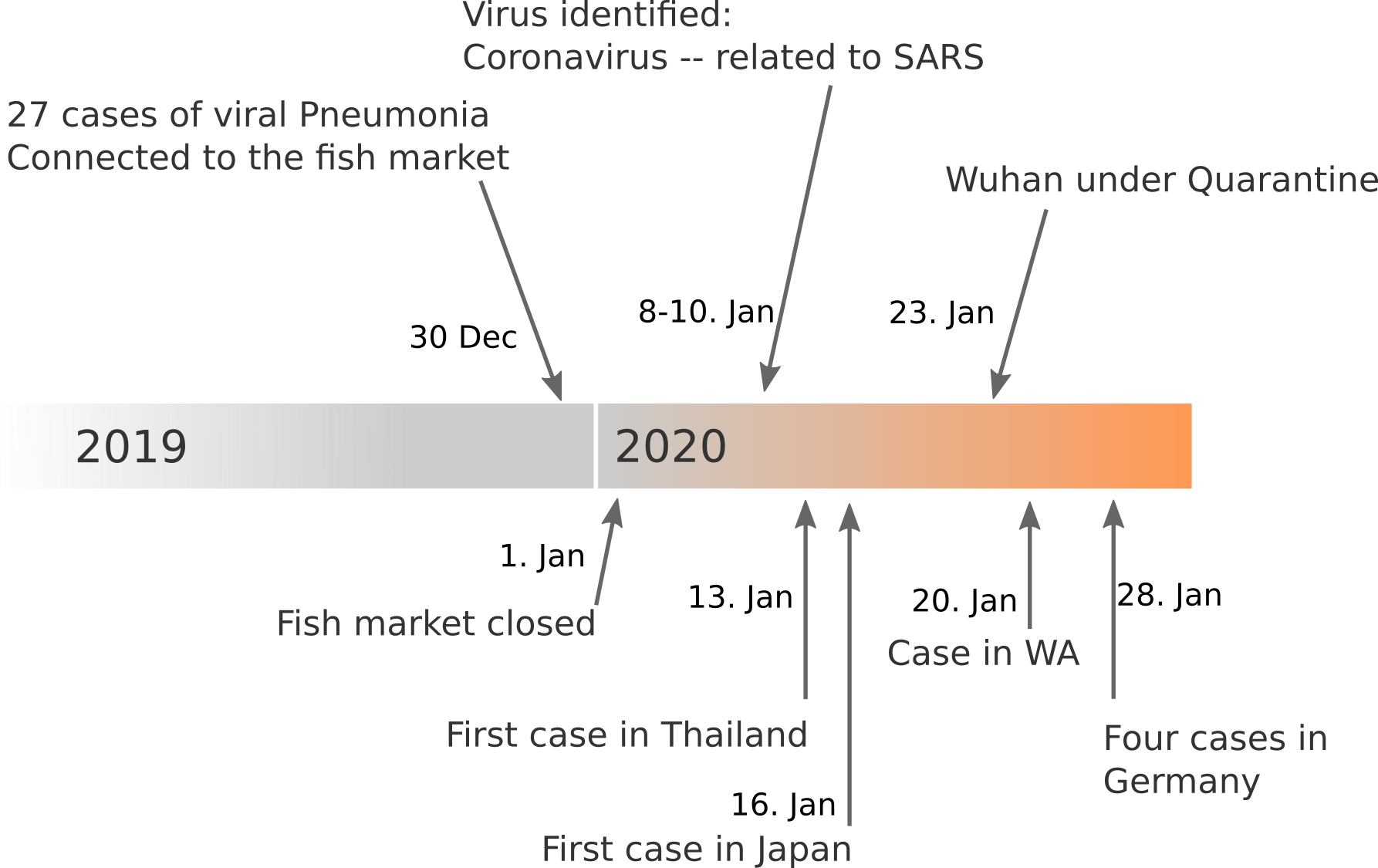 Data summarized by Ian MacKay
Data summarized by Ian MacKay
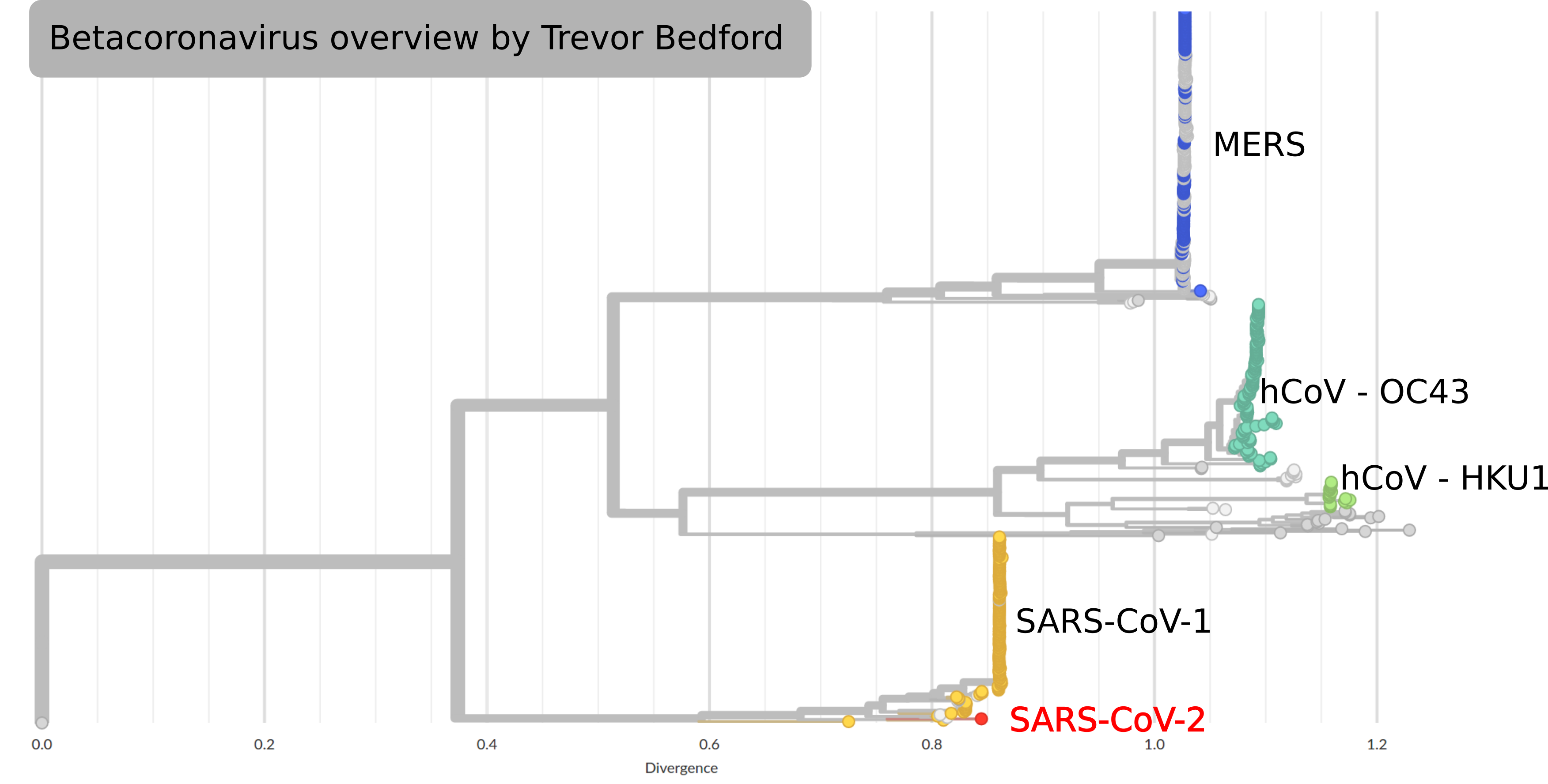 by Trevor Bedford
by Trevor Bedford
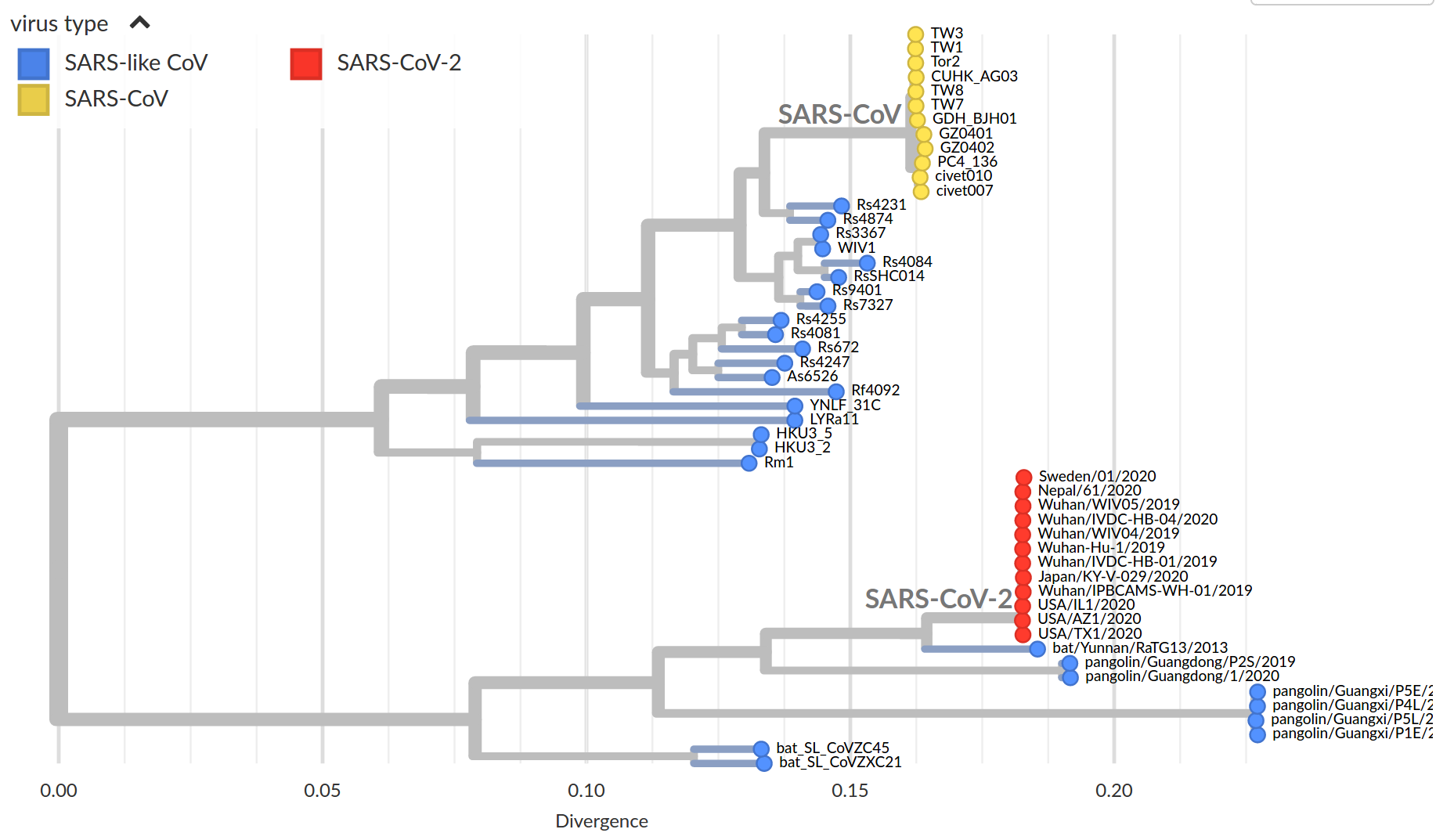 by Trevor Bedford
by Trevor Bedford
SARS-CoV-2 and its relatives
- SARS-CoV-2 is in the same family as SARS-CoV-1, MERS and two seasonal coronavirus
- The latter cause mild disease, the former severe
- SARS-CoV-2 spreads more easily than SARS-CoV-1 or MERS
- Relatives are found in many different animals
- Closest known relative is a virus isolated from bats
(RaTG13, approx 96% identical) - Coronavirus recombine: trees need to be interpreted with caution
Tracking diversity and spread of SARS-CoV-2 in nextstrain
The SARS-CoV-2 genome

- 29k linear (+)ssRNA genome -- one of largest RNA virus genomes
- the first 2/3 code for the replication machinery
Available data on Jan 26
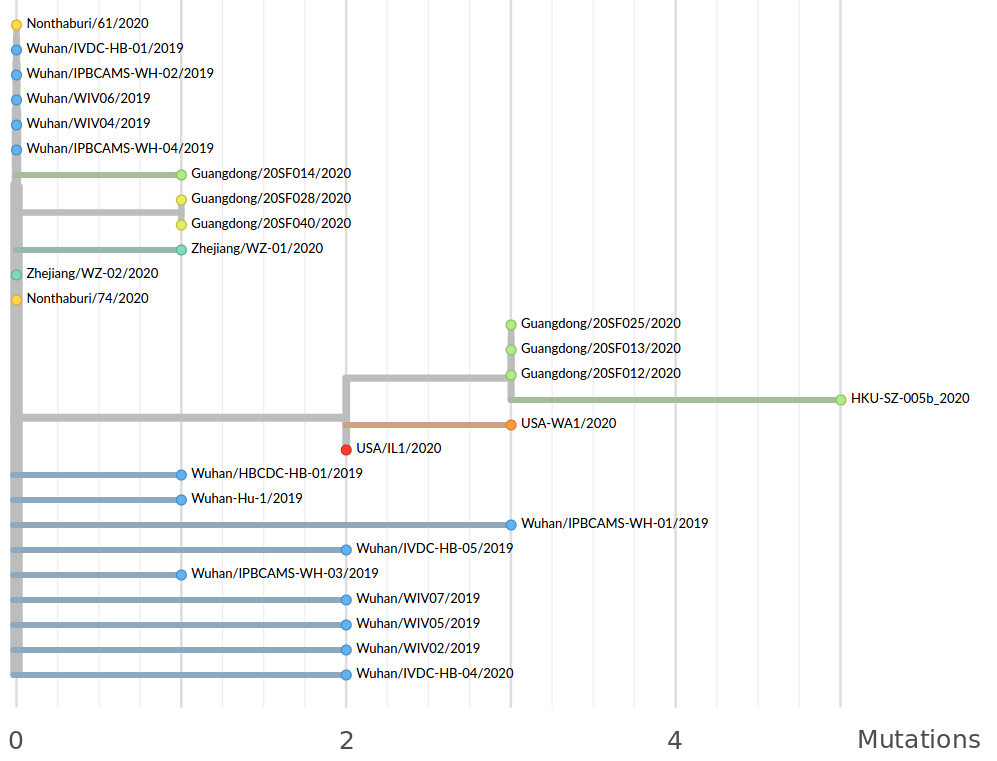
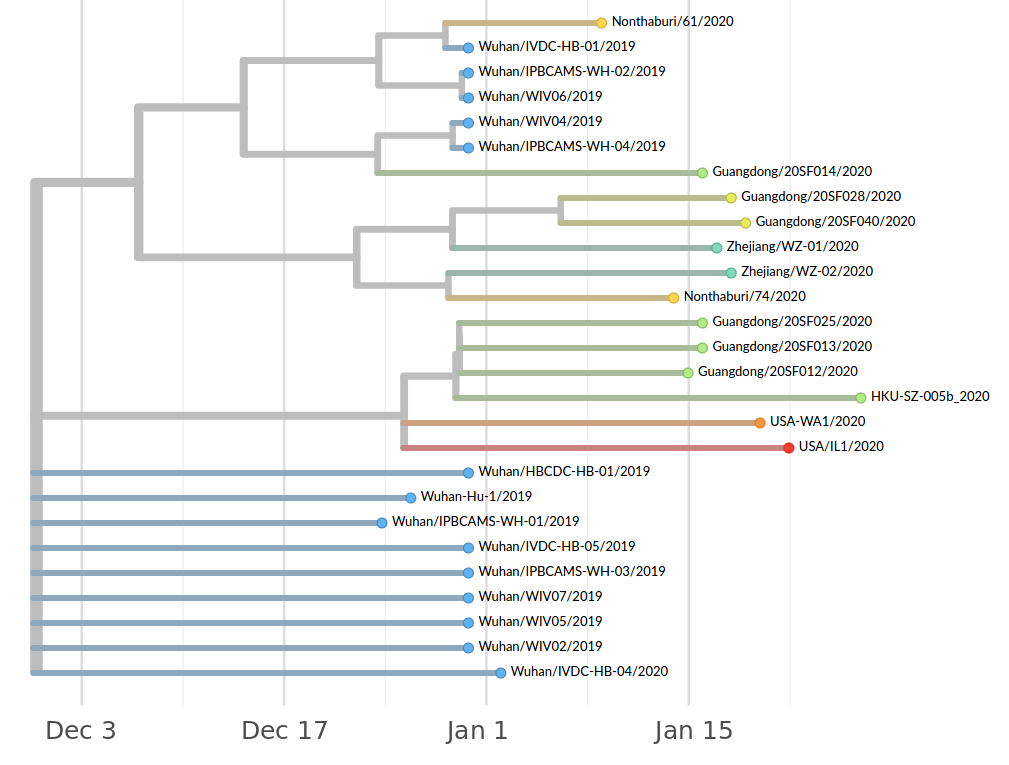
Early genomes differed by only a few mutations, suggesting very recent emergence
Early lessons from SARS-CoV-2 genomes (mid Jan)
- The outbreak originated from one source
→ not repeated zoonoses from a diverse reservoir. - The common ancestor of all samples was Nov - early Dec 2019.
- Family clusters showed up as identical genomes (expected)
- A second clade emerged that will continue to spread
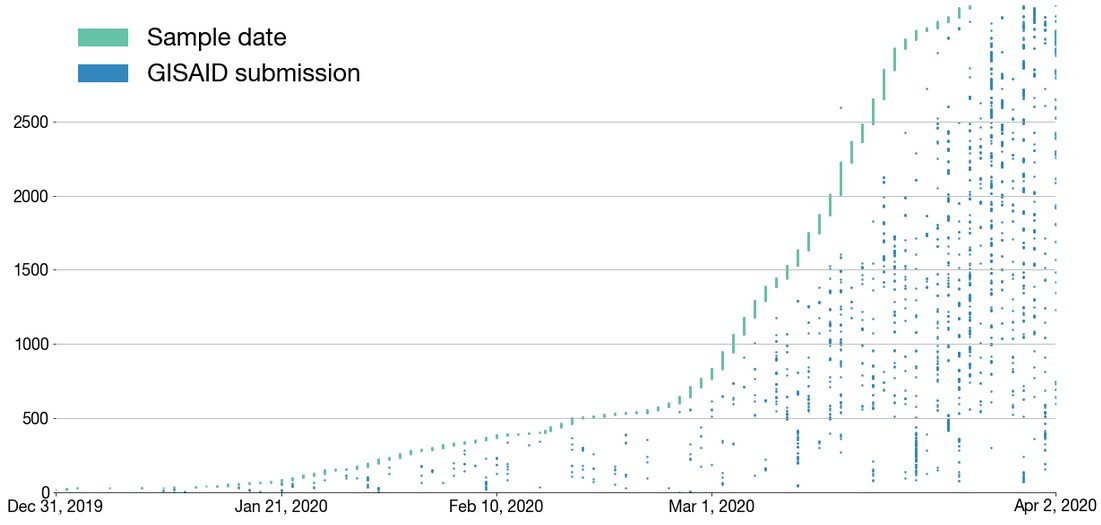
→ the closest to "real-time" we have experienced so far...
Figure by James HadfieldAvailable data on April 22
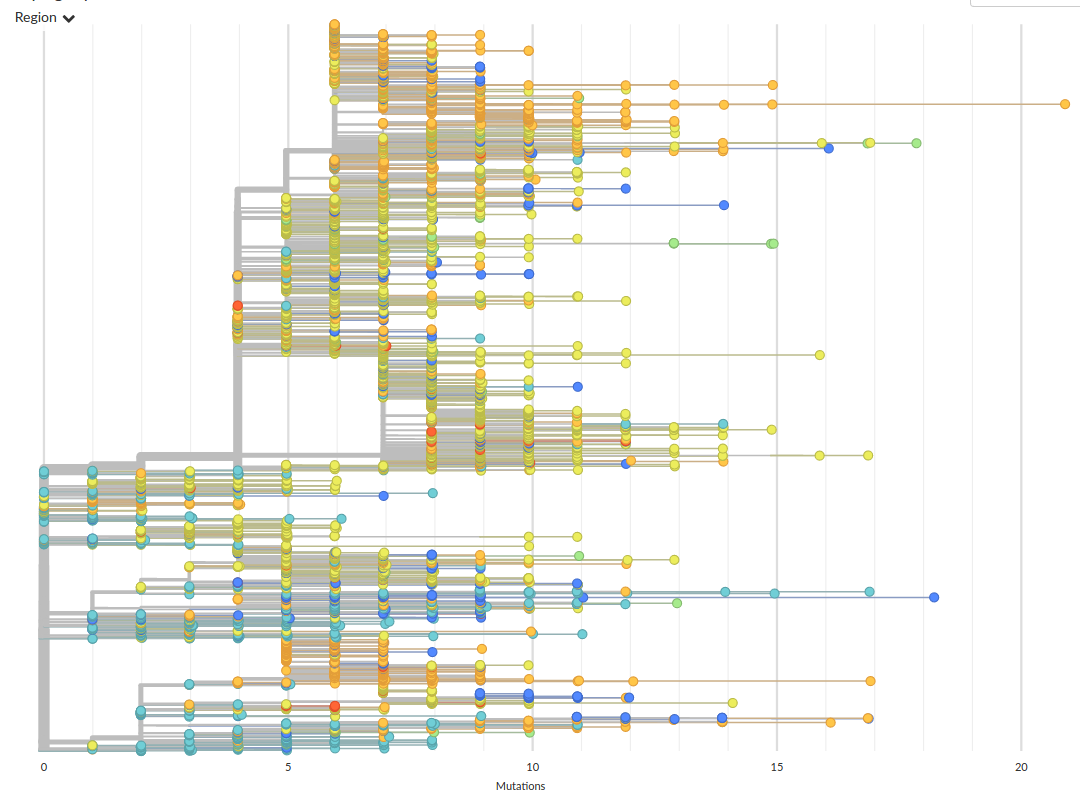
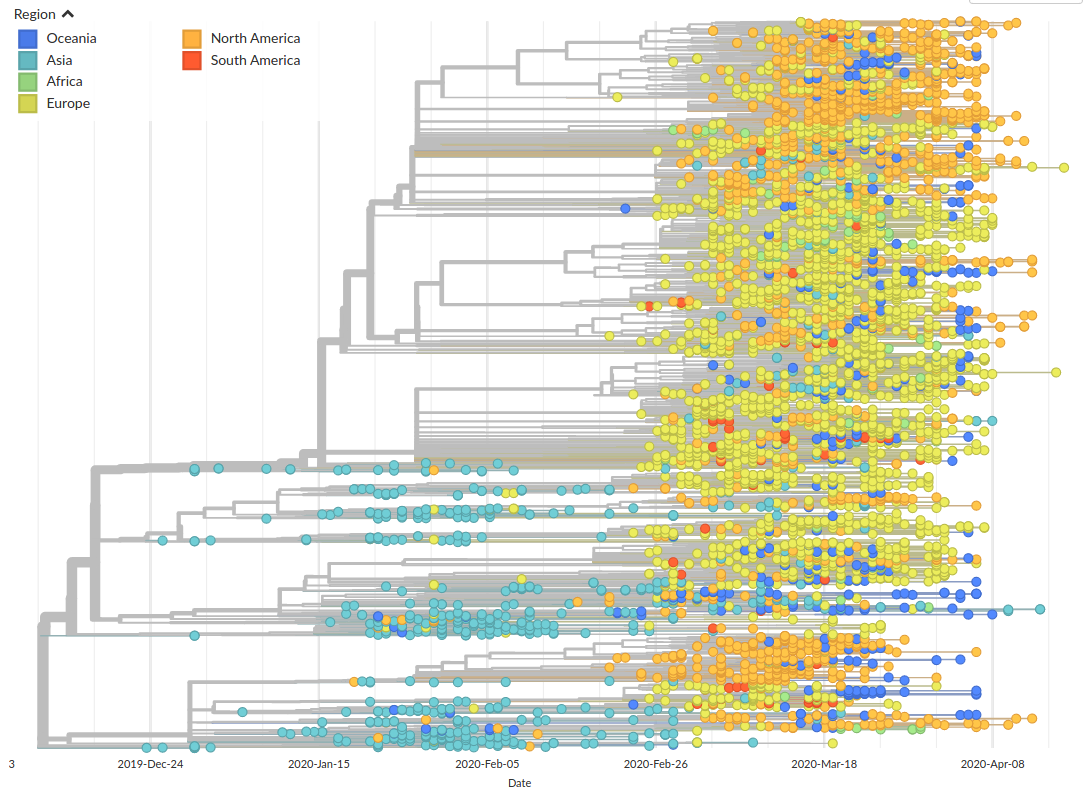
Subset of available data on April 22
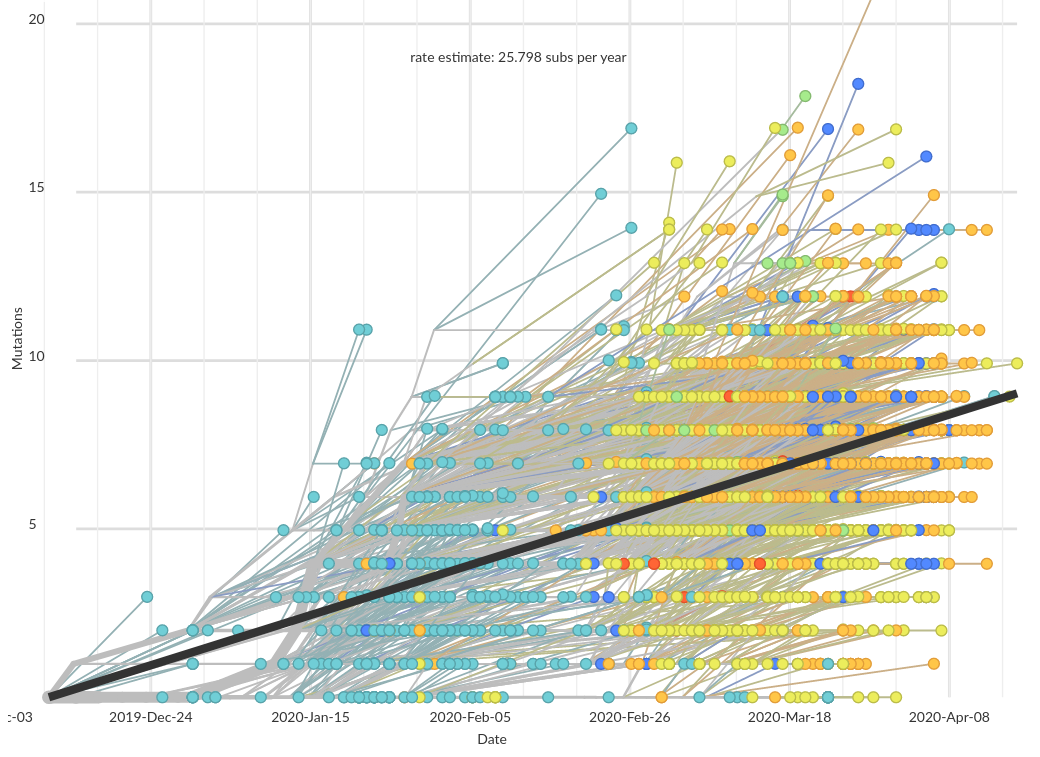
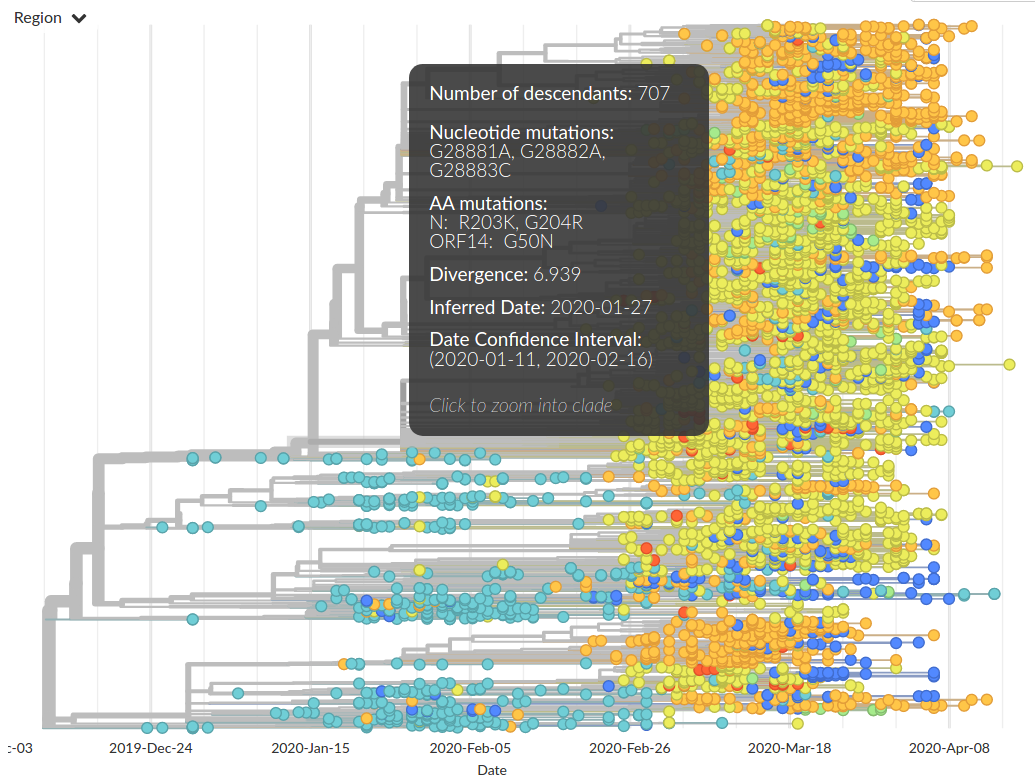
About two mutations per month, but mutations are often clustered and overdispersed
Tracing the origins of samples from Iceland
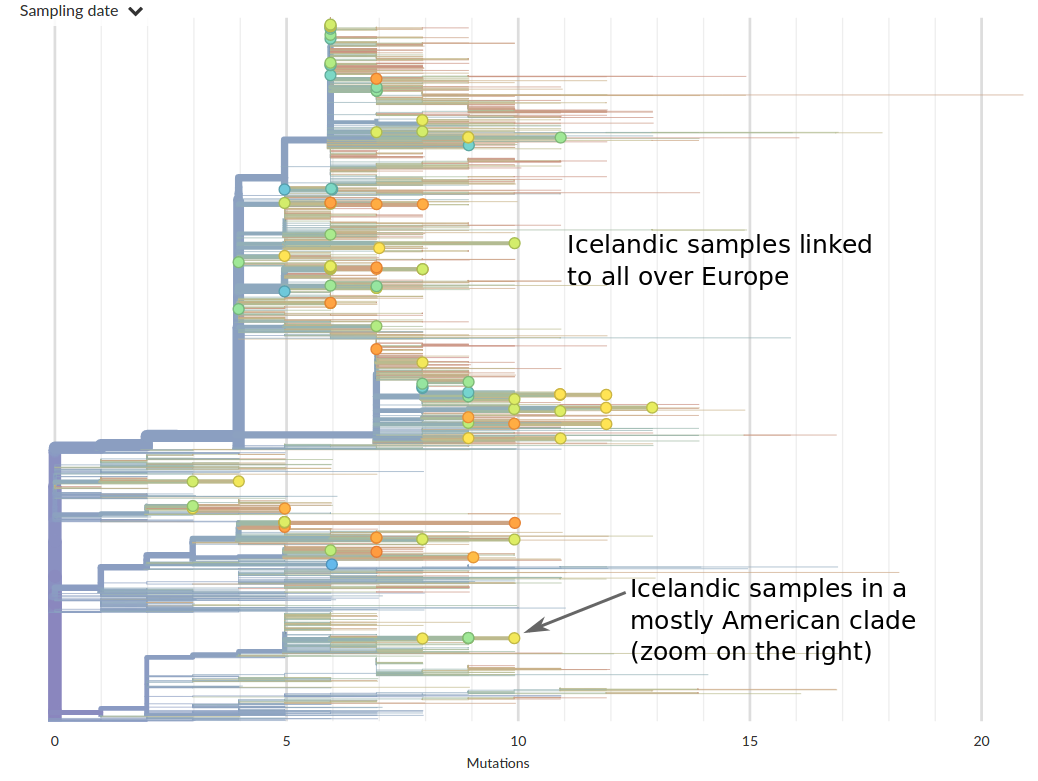
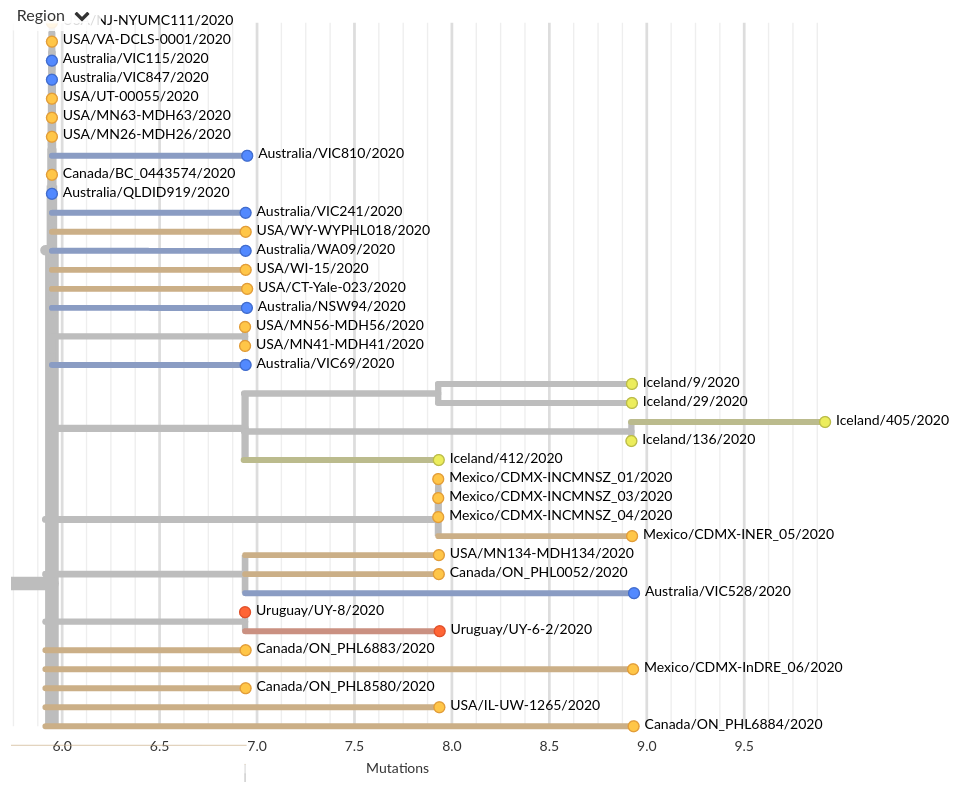
SARS-CoV-2 is remarkably mixed geographically -- genomes connect outbreaks in different places
Current take-home from SARS-CoV-2 genomes
- SARS-CoV-2 was disseminated widely before travel restrictions
→ Border closures had little effect - The virus typically spread locally before it was noticed
(while testing focussed on people with travel history to hotspots) - Temporal resolution by mutation is about 4 weeks
→ too low to resolve direct transmissions or directionality
→ sufficient to connect outbreaks and identify clusters - Currently no solid evidence for mutations with functional significance
see Sergei Pond's analysis of signals of positive selection
Fighting misinformation
Conspiracy theories and sensationalist research
WRONG:
- COVID-19 has been with us for much longer
Genetic diversity suggests recent emergence, respiratory samples from last year are PCR negative - Origin are snakes (snake-flu)
debunked by Kristian Andersen - Recombinant with HIV
debunked by Trevor Bedford
LIKELY WRONG:
- Prevalence is high, the mortality is low
False positive rates are not accounted for correctly, unrepresentative study populations - Some strains are more severe than others
confounders not accounted for - Some strains are adapted to different parts of the world
confounders not accounted for - many more....
Colorful trees are easily misinterpreted...
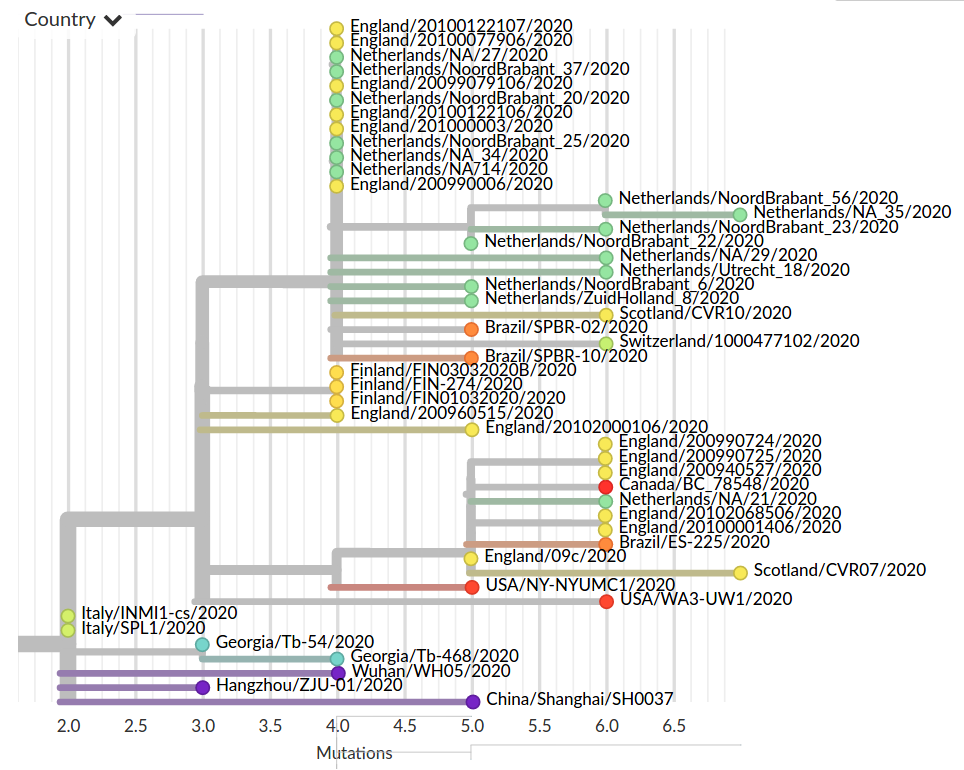
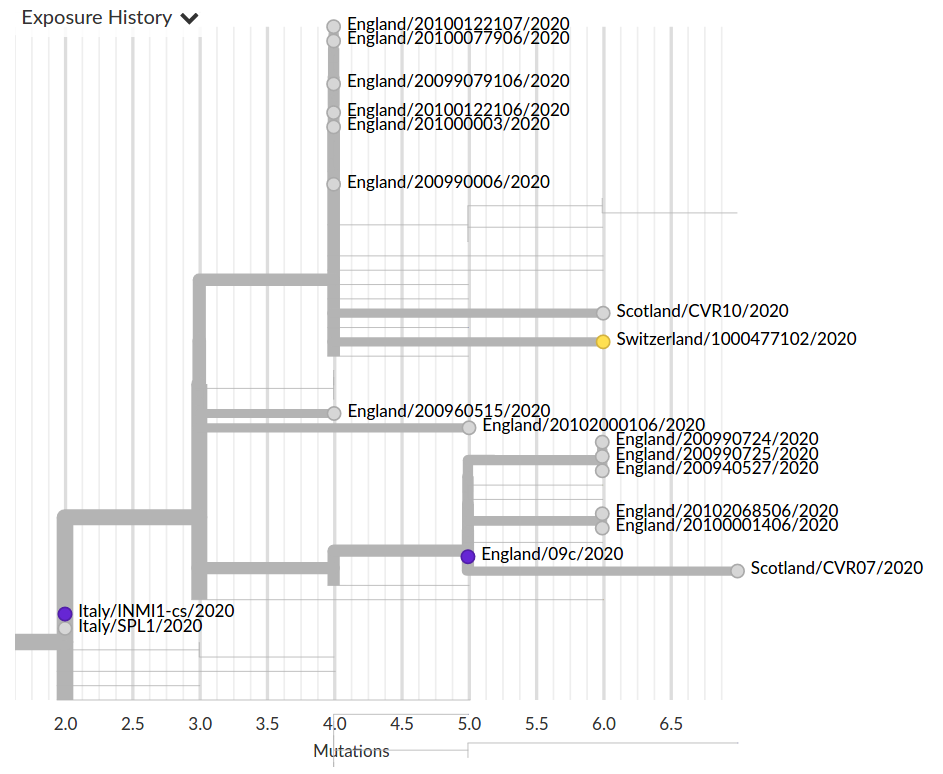
Low genetic diversity combined with very biased sampling → no directionality can be inferred
Nextstrain situation reports
Sidney Bell, Cassia Wagner, Emma Hodcroft, James Hadfield, Nicola Müller and others
Acknowledgements
Trevor Bedford and his lab -- terrific collaborations since 2014

James Hadfield, Emma Hodcroft, and Tom Sibley have led the recent development
People at the frontlines: health care staff and everybody else who keeps things going...
Data we analyze are contributed by scientists all over the world
Data are shared and curated by GISAID

